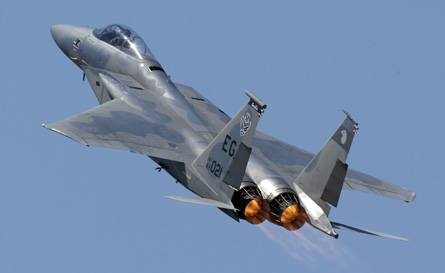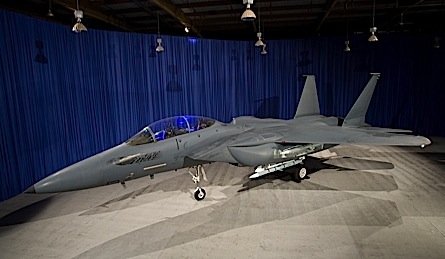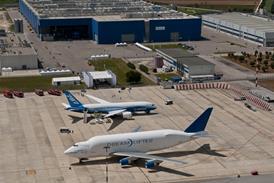The US Air Force has revealed plans to purchase and integrate 100 infrared search and track (IRST) pods for its Boeing F-15C/D fleet, the latest addition to a $3 billion portfolio of upgrades since 2000 for the dwindling Eagle fleet.
Lockheed Martin will supply Boeing with an upgraded version of the ANS-42 IRST pod that originally flew on the US Navy's Grumman F-14D Tomcat, and was selected more recently for the Boeing F/A-18E/F Super Hornet.
Unlike the F/A-18's IRST pod, which is mounted at the front of a fuel tank, the F-15 version will feature a sleeker pod design mounted on its "Station 5" stores pylon, says Brad Jones, Boeing's F-15 radar modernisation programme manager. A similar pod has already been supplied for South Korea's F-15K fleet.
Although mounted on the aircraft's belly, the long-range sensor will have the ability to look up by 5°, Jones says. As a passive sensor, the IRST pod will augment the F-15C/D fleet's mechanically and electronically scanned radars to search for enemy aircraft and missiles at very long range, he adds.
The selection provides a glimpse into the possible future for the USAF's core fleet of F-15C/Ds and F-15E Strike Eagles.
The USAF plans to retire about 170 C/D model aircraft in 2010, reducing its non-stealthy air superiority fighter fleet from about 400 to 230 fighters. This is expected to be further reduced to a core of 176.
 |
|---|
© runlikehell Gallery on flightglobal.com/AirSpace |
F-15C operations will be boosted by the IRST upgrade |
These so-called "Golden Eagles" may be in line for further upgrades, including active electronically scanned array (AESA) radars and digital electronic warfare suites.
Congress has already inserted money to upgrade mechanical radars for 16 USAF F-15C/Ds with Raytheon's APG-63(V)3 AESA. Meanwhile, the air force is also upgrading all 224 F-15Es with the company's APG-82(V)1, which matches the antenna from the APG-63(V)3 with the more advanced back-end processor from Raytheon's APG-79. The latter is already operational on the USN's F/A-18E/F and EA-18G Growler fleets.
The APG-82(V)1 system is actually cheaper to buy than the previous-generation APG-63(V)3, says Jones, perhaps making it a logical choice should the USAF decide to upgrade all 176 Golden Eagles to the AESA standard. Likewise, it also may consider upgrading all its F-15Es with the ISRT pod, he says.
Separately, Jones says Boeing is "close to reaching agreements" with foreign industry as risk-sharing partners on the company's stealthy F-15 Silent Eagle. This converts conformal fuel tanks into internal weapons bays and adds a digital electronic warfare system. The risk-sharing deals are expected to coincide with an order for Silent Eagles by the host government.
 |
|---|
© Boeing |
The stealthy F-15SE could be close to its launch order |
Boeing says plans remain on track to flight test the first F-15SE in the third quarter of 2011.
Source: Flight International























